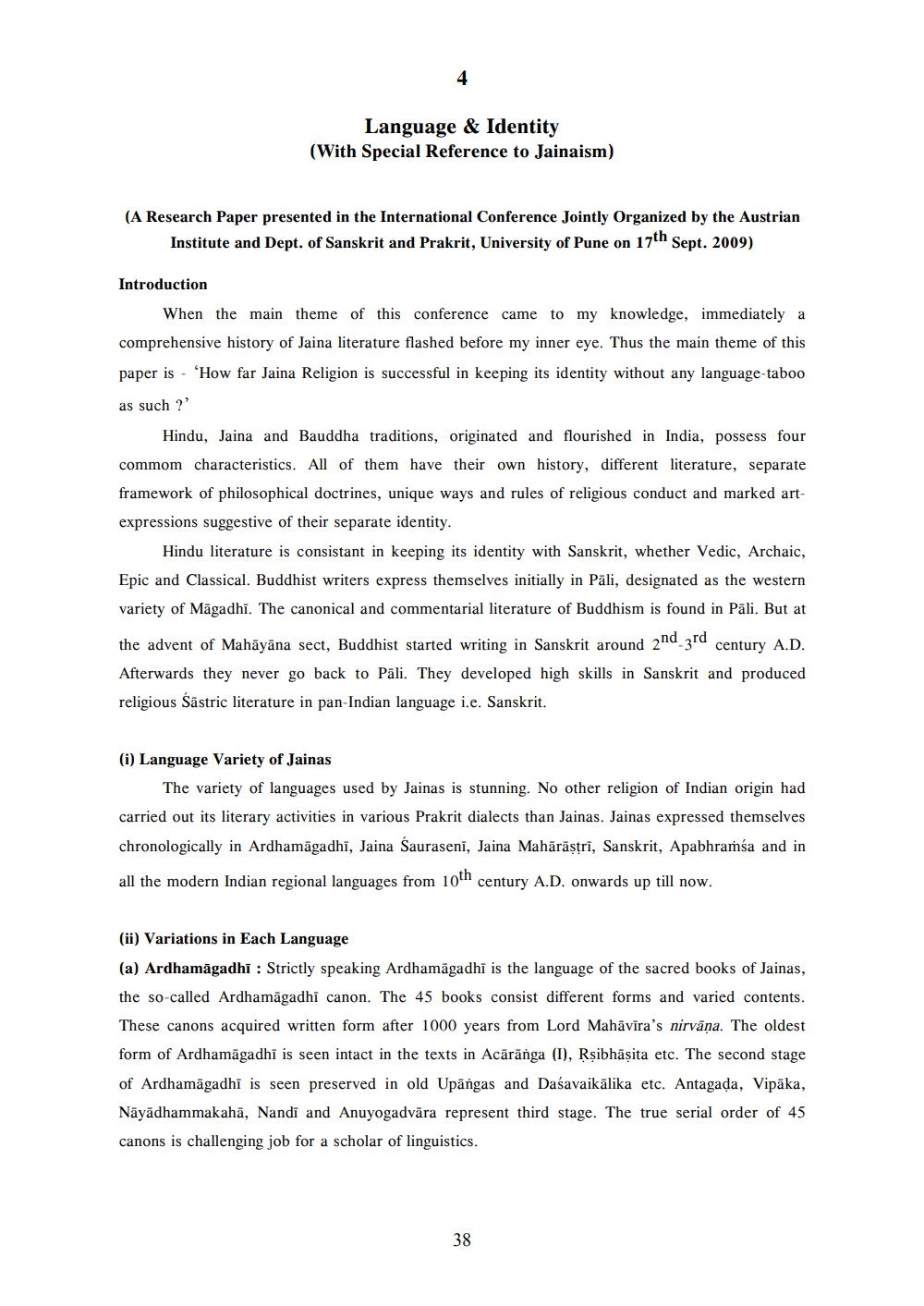________________
Language & Identity (With Special Reference to Jainaism)
(A Research Paper presented in the International Conference Jointly Organized by the Austrian
Institute and Dept. of Sanskrit and Prakrit, University of Pune on 17th Sept. 2009)
Introduction
When the main theme of this conference came to my knowledge, immediately a comprehensive history of Jaina literature flashed before my inner eye. Thus the main theme of this paper is - 'How far Jaina Religion is successful in keeping its identity without any language-taboo as such ?'
Hindu, Jaina and Bauddha traditions, originated and flourished in India, possess four commom characteristics. All of them have their own history, different literature, separate framework of philosophical doctrines, unique ways and rules of religious conduct and marked artexpressions suggestive of their separate identity.
Hindu literature is consistant in keeping its identity with Sanskrit, whether Vedic, Archaic, Epic and Classical. Buddhist writers express themselves initially in Pāli, designated as the western variety of Māgadhi. The canonical and commentarial literature of Buddhism is found in Pāli. But at
the advent of Mahāyāna sect, Buddhist started writing in Sanskrit around 2nd 3rd century A.D. Afterwards they never go back to Pāli. They developed high skills in Sanskrit and produced religious Sāstric literature in pan-Indian language i.e. Sanskrit.
(i) Language Variety of Jainas
The variety of languages used by Jainas is stunning. No other religion of Indian origin had carried out its literary activities in various Prakrit dialects than Jainas. Jainas expressed themselves chronologically in Ardhamāgadhi, Jaina Sauraseni, Jaina Mahārāstrī, Sanskrit, Apabhramsa and in
all the modern Indian regional languages from 10th century A.D. onwards up till now.
(ii) Variations in Each Language (a) Ardhamāgadhi : Strictly speaking Ardhamāgadhi is the language of the sacred books of Jainas, the so-called Ardhamāgadhi canon. The 45 books consist different forms and varied contents. These canons acquired written form after 1000 years from Lord Mahāvīra's nirvāna. The oldest form of Ardhamāgadhi is seen intact in the texts in Acārānga (I), Rşibhāsita etc. The second stage of Ardhamāgadhi is seen preserved in old Upāngas and Daśavaikālika etc. Antagada, Vipāka, Nāyādhammakahā, Nandi and Anuyogadvāra represent third stage. The true serial order of 45 canons is challenging job for a scholar of linguistics.
38




